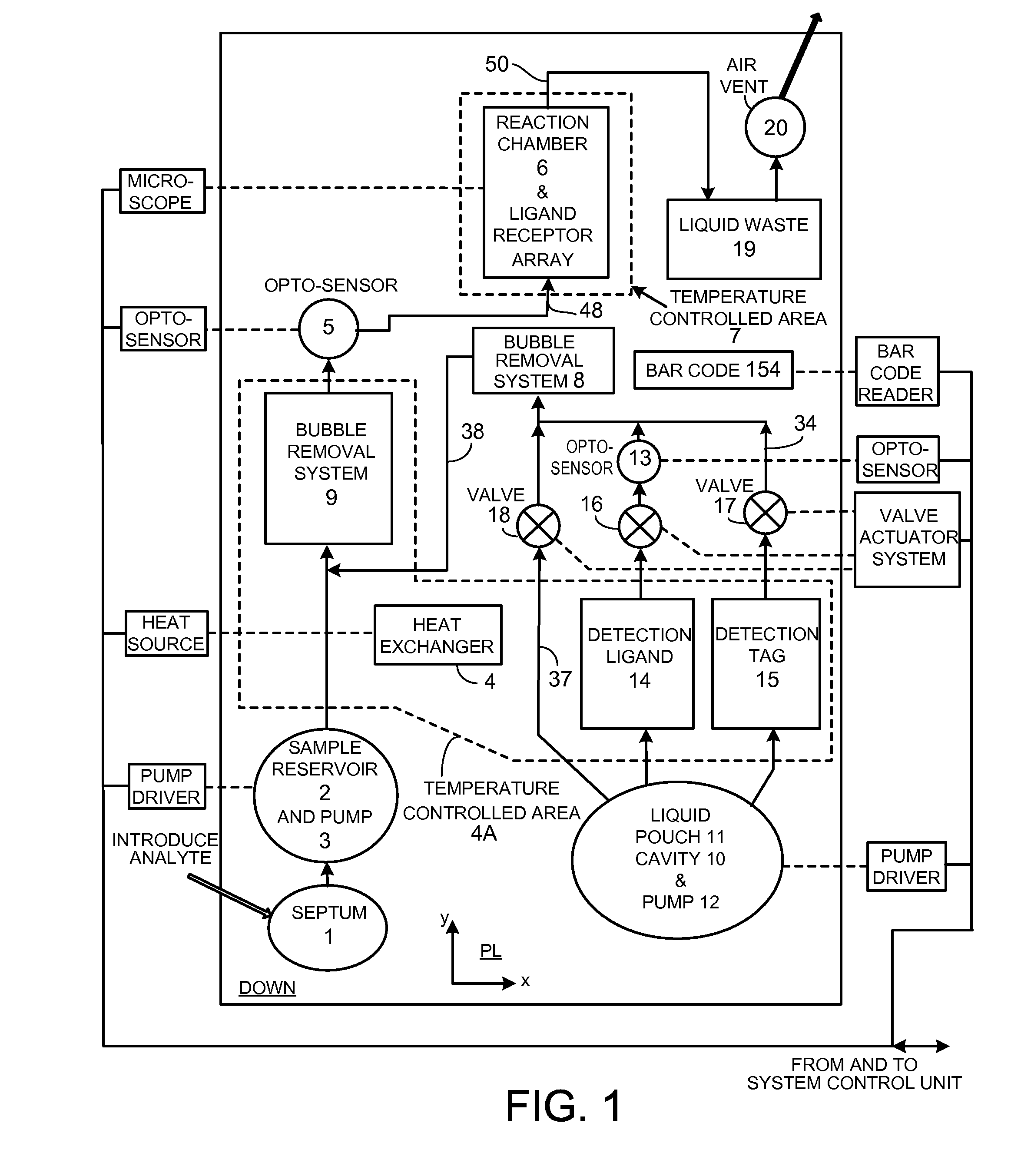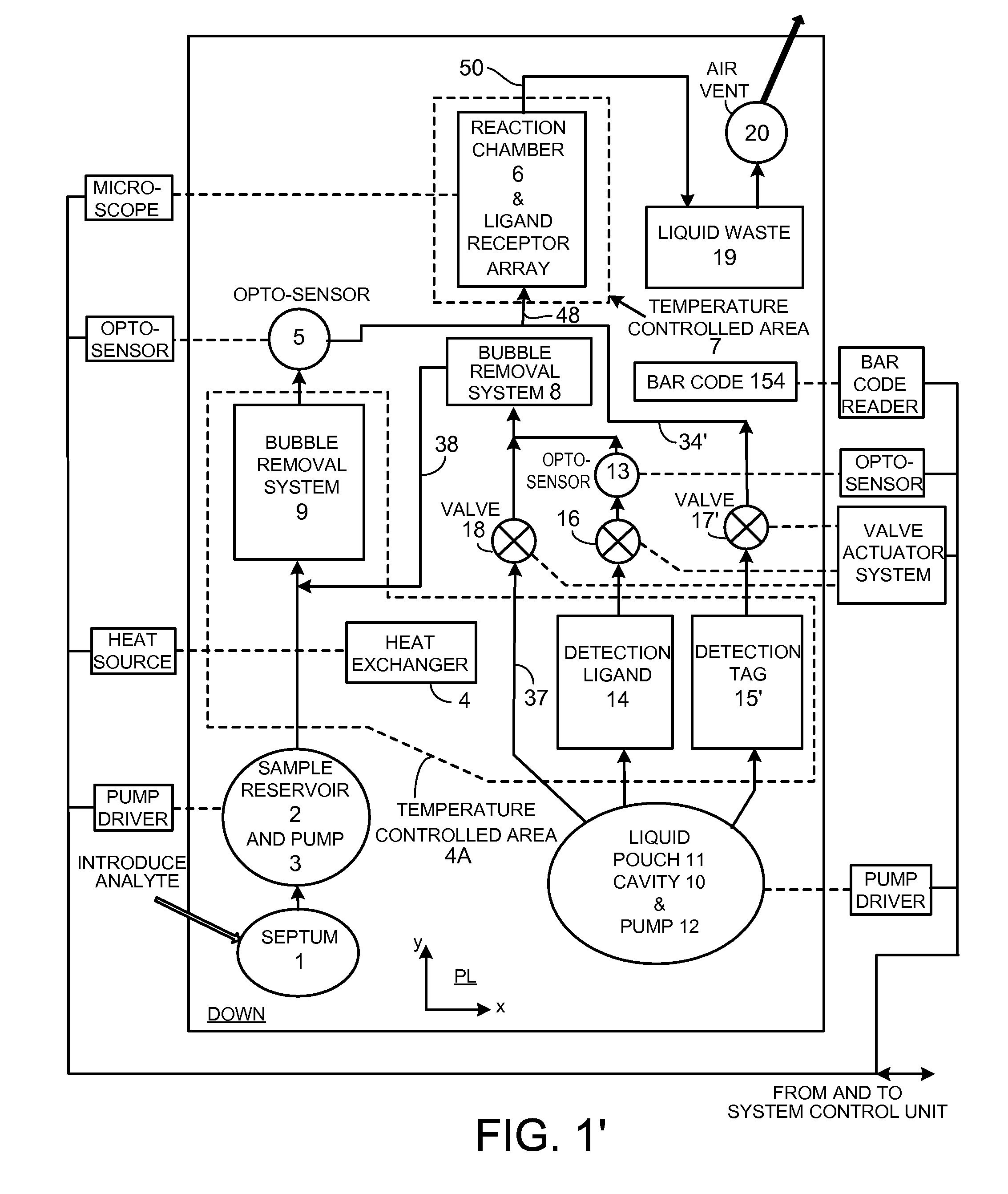Assays Based on Liquid Flow over Arrays
a liquid flow and array technology, applied in the field of cassettes, can solve the problems of affecting the assay, difficulty in achieving the desired degree of agitation and flow consistency in a practical, reliable, low cost way, and not suitable for agitation of fluids in cassette chambers, and achieve the effect of high consistency and low cos
- Summary
- Abstract
- Description
- Claims
- Application Information
AI Technical Summary
Benefits of technology
Problems solved by technology
Method used
Image
Examples
Embodiment Construction
[0162]Diffusion is the dominant process that brings molecules such as proteins into proximity / binding in a low Reynolds Number fluid flow. The technology presented here offers a number of techniques that together speed the process of molecular coupling and reduce manufacturing cost. These include (i) a hydrophilic support upon which proteins are desiccated that offers a very large surface to volume ratio and (ii) a technique employing the support that fluidizes (liquefies) desiccated molecules to achieve approximately homogeneous properties within a specific fluid volume and transport of the fluid homogeneously with little alteration over the capture surface; (iii) a pouch for reagent storage that serves as the pump body and permits limited bi-directional fluid transport; (iv) separate, cascaded bubble traps for sample and reagent that enable sample volume to be small and allow for a robust design that compensates for variations of pumped reagent volume; (v) techniques that improve ...
PUM
| Property | Measurement | Unit |
|---|---|---|
| size | aaaaa | aaaaa |
| pore size | aaaaa | aaaaa |
| pore size | aaaaa | aaaaa |
Abstract
Description
Claims
Application Information
 Login to View More
Login to View More - R&D
- Intellectual Property
- Life Sciences
- Materials
- Tech Scout
- Unparalleled Data Quality
- Higher Quality Content
- 60% Fewer Hallucinations
Browse by: Latest US Patents, China's latest patents, Technical Efficacy Thesaurus, Application Domain, Technology Topic, Popular Technical Reports.
© 2025 PatSnap. All rights reserved.Legal|Privacy policy|Modern Slavery Act Transparency Statement|Sitemap|About US| Contact US: help@patsnap.com



